Ralph Hasenhüttl has made quite an impression on the south coast since arriving in December 2018.
His focus on brave possession-based football combined with a tenacious pressing game has won him plaudits worldwide.
His latest challenge came in the shape of Mauricio Pochettino and his mercurial Spurs.
Tottenham came into this game on the back of mixed results.
Riding high on the success of reaching the quarterfinals of the Champions League for the first time since 2012/13, their recent domestic form has seen them pick up just one point in three games.
Lineups
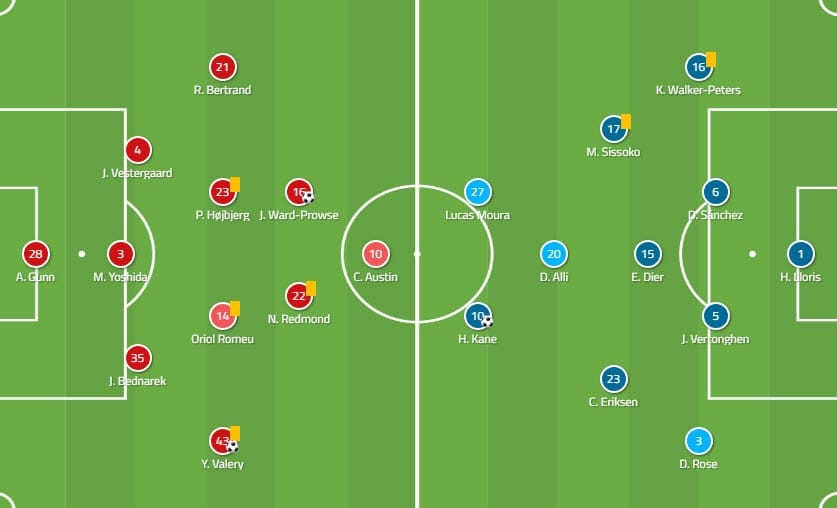
Southampton entered the game unchanged from the previous weekend’s loss against Manchester United.
Many felt they were unlucky not to pick up at least a point at Old Trafford.
Hasenhüttl sent out the same XI with their sights firmly set on upsetting a top-six opponent.
Pochettino continued to rotate his tight-knit squad, making five changes from the midweek heroics in Dortmund.
Dele Alli and Lucas Moura came in for Son Heung-min and Harry Winks, with Danny Rose and Kyle Walker-Peters replacing Ben Davies and Serge Aurier.
The last change saw Eric Dier come in to anchor the midfield in the place of Toby Alderweireld.
As expected, these switches also saw a change in shape for Spurs, with a return to the 4-diamond–2 formation out of possession.
Dealing with numerical equality
In the early stages of the game, both teams looked to cancel out the potential of the opposition finding numerical superiority in midfield.
Both teams formed a 3-4-2-1 shape.
The first step within this for Tottenham was Dier dropping between Davinson Sanchez and Jan Vertonghen during the buildup phase.
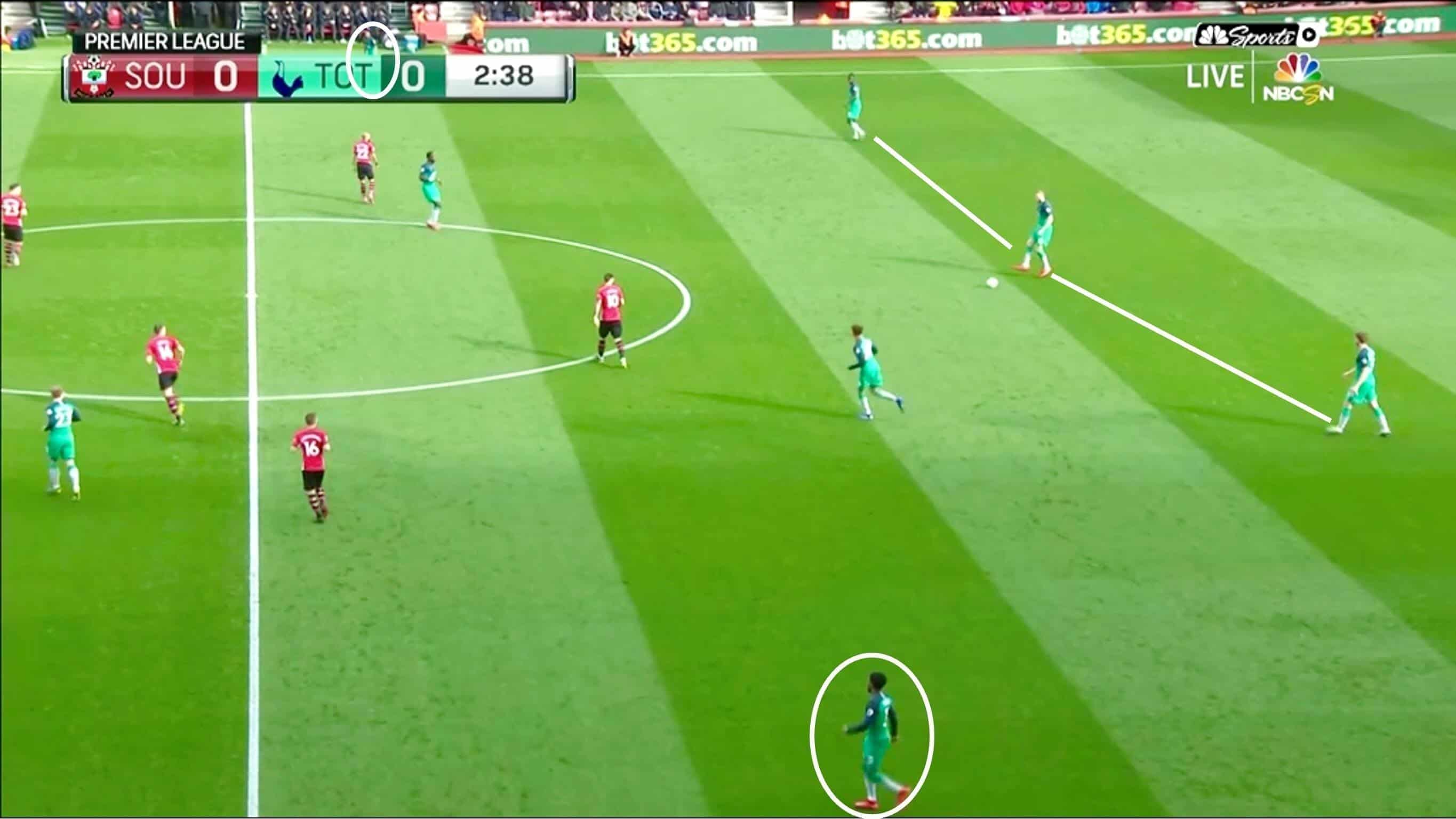
In doing this, Spurs were hoping to force Southampton into a decision in terms of putting pressure on the ball.
The aim was to draw out one of the Saints’ midfield four to help Charlie Austin press the ball.
As you can see in the above and below images, however, Hasenhüttl has his team well drilled.
They did not break defensive ranks to pressure the ball in these situations.
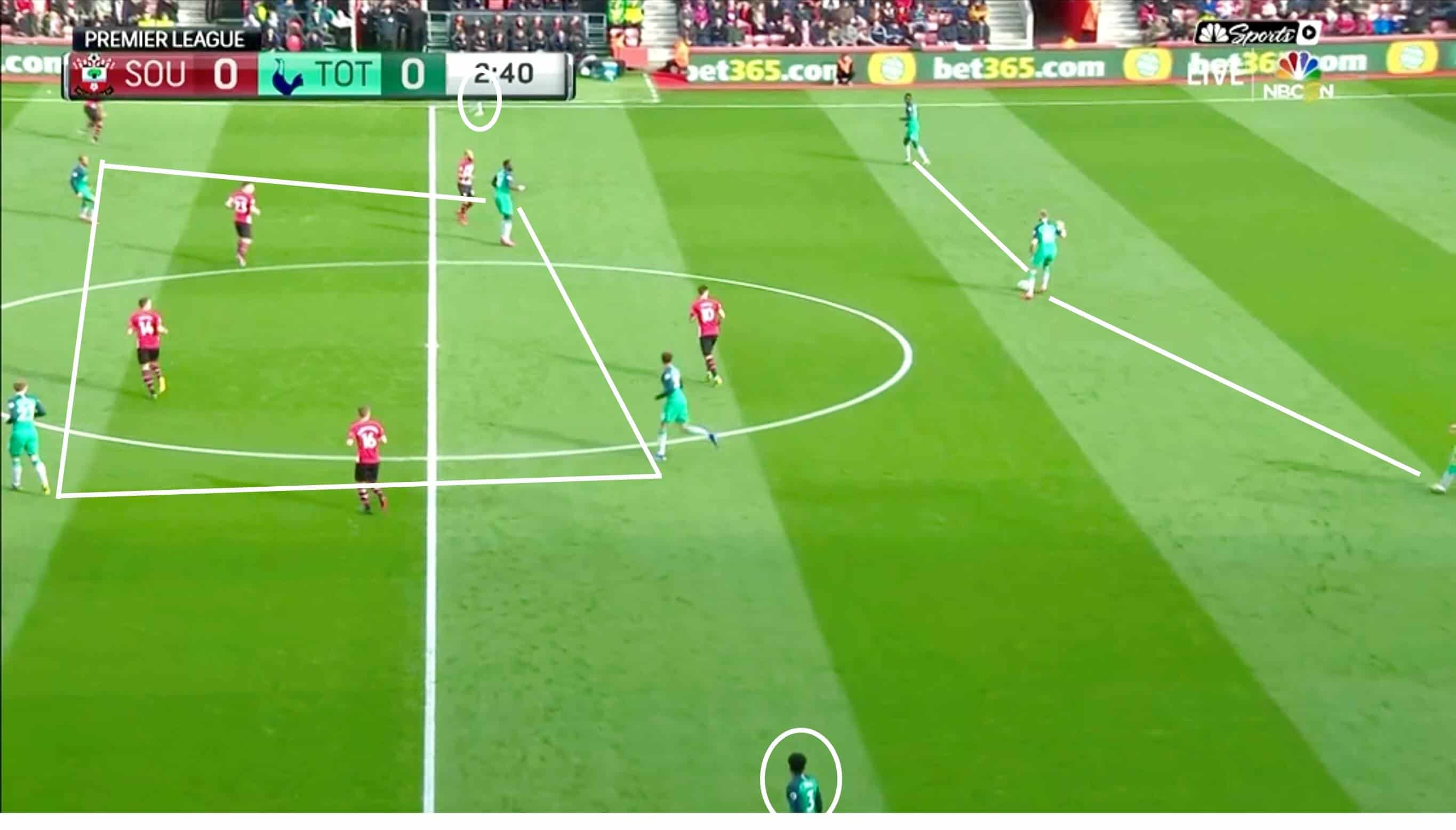
Tottenham then looked to create a box midfield with Moussa Sissoko and Christian Eriksen taking the two lower positions with Lucas and Alli taking the higher spots.
This central overload of players forced James Ward-Prowse and Nathan Redmond to drop diagonally inside to cover the half-space channels with their cover shadows.
As a result, Rose and Walker-Peters could position themselves on the flanks and offer themselves as free men.
When Ward-Prowse and Redmond needed to press the Tottenham full-backs out wide it created numerical equality in the central areas.
When teams find themselves in numerical equality, positional superiority becomes paramount.
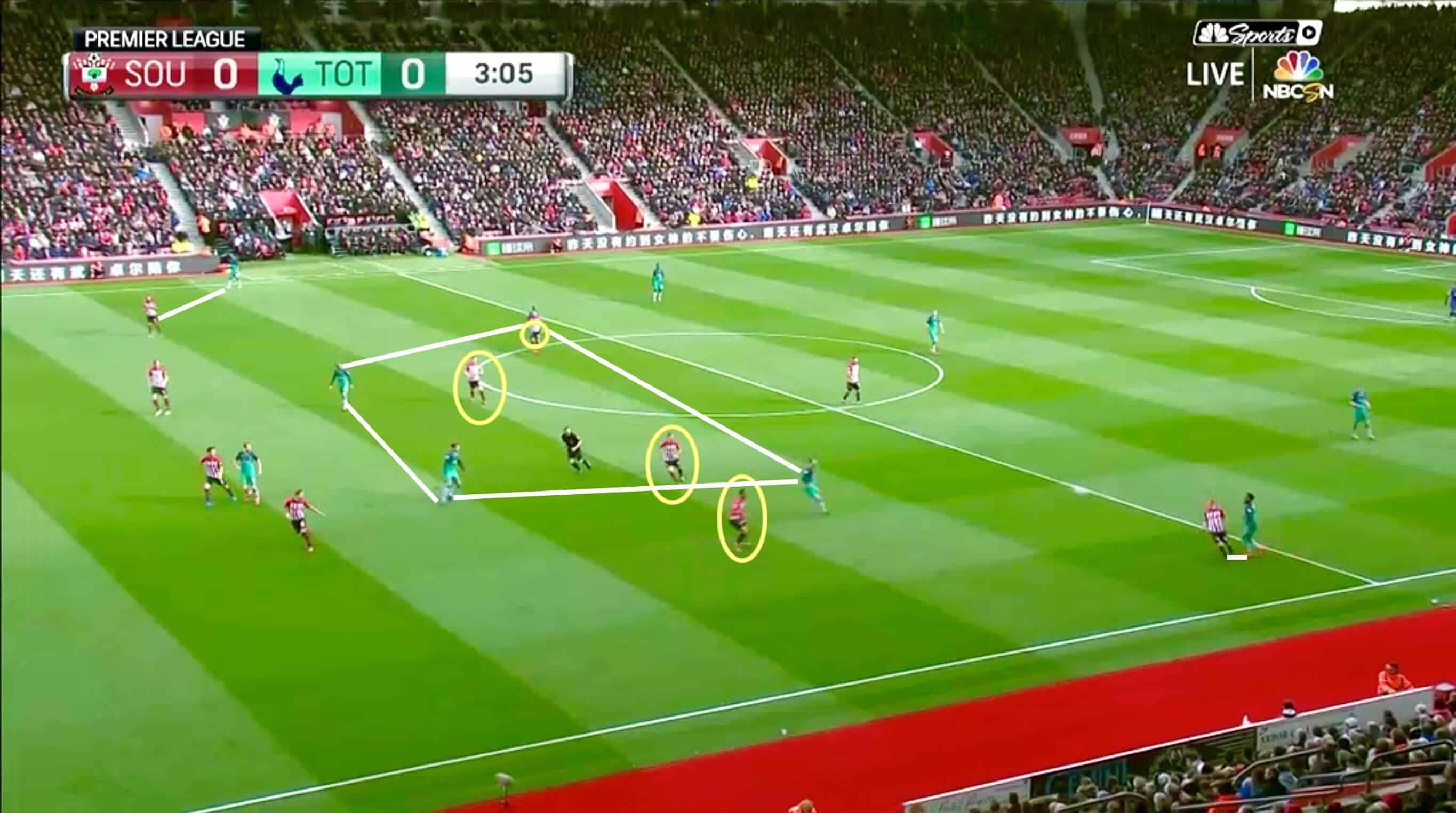
In the above image, you can see the ball with the Tottenham left-back Danny Rose.
Ward-Prowse has stepped out of the defensive block to apply pressure on the Spurs man.
In doing so he removes the extra layer of protection he was providing the Saints midfield in terms of stopping third-line passes.
Tottenham’s positioning now becomes key in terms of chance creation.
Southampton matched Spurs man-for-man in the middle.
However, the Saints midfield line has allowed Tottenham’s two top-box midfielders to position themselves between their defensive and midfield lines.
Since passes received between the defensive and midfield lines lead to a shot on goal 25% of the time, this is an issue.
In this case, both Alli and Lucas are positioned on the Southampton midfield’s blindside, with Walker-Peters still providing a free-man option on the weak-side wing.
The knock-on effect of this is that if Alli or Lucas is able to receive the ball, then they will be attacking the Southampton back line.
From here Spurs looked to create a 2v1 advantage where previously it had been a one on one through driving with the ball directly at the defenders.
Mismanagement of counter-space
Just past the 25-minute mark, the deadlock was broken.
Southampton won back the ball in the Spurs defensive third from a well-organised press.
Redmond then drew Eriksen and Sissoko towards him before releasing Ward-Prowse 25 yard out.
The young Saints man set the ball on his right foot and lined up a shot.
On his current form, Ward-Prowse is one of the most dangerous people from this distance in the Premier League.
Unfortunately for Southampton however, from this point, everything went wrong.

As you can see in the above image, Tottenham have set a stable defensive line on the edge of the penalty box.
The back four plus Eric Dier have the horizontal and vertical passing lanes covered whilst Eriksen and Sissoko look to control space between the lines.
These seven players are still following the defensive principle set out by Bielsa of always having a one-man advantage during defensive actions.
Southampton, however, will not be as pleased with their attacking positioning.
Due to football being a constant invasion sport, it is vital that you set up attacks with defence in mind.
In this case, Hasenhüttl will not be happy with how this phase played out.
Southampton did manage to pressure Tottenham well in their initial press.
Conversely, the gap between the midfield and defence grew to be too big to manage in terms of a turnover.

Once Ward-Prowse’s shot was blocked, the ball fell to the feet of Alli.
Whilst numerically Southampton managed to keep plus one in the defensive line, the gap between the midfield and defence was too large to delay Spurs’ counter while help arrived.
Above you see Alli being able to get goal-side of his marker.
This means that Tottenham now found themselves in a 3v3 counter-attack.
You can also see that the distances between the Saints backline and the forwards were about six yards.
This distance is important as it is large enough to cover for qualitative speed, but also provides the option of putting direct pressure on the receiver if required.

Kane’s movement, however, was not what Southampton expected.
Instead of driving forwards keeping his position in the central channel, he slowed and dropped off to receive the ball from Alli.
This was possible because of the initial gap between the defensive and midfield lines of Southampton when Ward-Prowse got the ball.
As you can see in the above image, the distance between Kane and Yoshida is now more than double what it was three seconds earlier.
This space allows Kane to turn, dribble and also opens up space for the supporting runners, in this case Lucas and Alli, to make crossing runs.
The purpose of the crossing runs is to try cause horizontal disorganisation in the Southampton back line.
If they could pin the three defenders in the central channel then the strong-side and weak-side half and wing-spaces open up.

By taking advantage of this, Kane is able to find Alli in the left half-space completely unmarked.
Five Southampton defenders had been drawn in centrally with all of them now looking at Alli in 10 yards of space.
This was another error on the Saints’ part.
Alli, well known for his intelligence in possession, noticed that all the Southampton players were focused in on him, which in turn meant they weren’t watching their blindside positions.
Alli then delayed on the ball.
Using the law of attraction he pulled the Southampton players towards the ball, opening up the blindside space for Kane to take up inside the penalty box.

Just managing to stay onside, Kane was able to keep the space and time needed to control Alli’s pass and finish passed Gunn.
With all five Saints defenders drawn into the central space around Alli and Lucas, Kane’s movement was designed and executed like something out of a practice session.
This counter-attack from Tottenham was swift, played with principles and executed to perfection.
It involved three switches of the ball, cases of dribble to attract and a fantastic case of blindside positioning from Kane to finish the move.
It was a very well taken goal and reminiscent of the Spurs we have been treated to in the Champions League.
Second half
Although having gone into the break losing, Hasenhüttl will have had cause to be optimistic about their chances in the second half.
The clear signs of the Austrian’s fingerprints are starting to emerge throughout the Southampton team.
This continued throughout the second half and was the main driver behind them managing to overturn the deficit and take all three points.

Over the course of the game, Southampton grew into their roles and continued to try to be brave in and out of possession.
The above image clearly shows that the two teams were well matched with the Saints just coming out on top in terms of xG.
This is another indicator of Hasenhüttl’s plan starting to be better understood on the south coast.
Bravery in possession
One of the key changes that Southampton have undergone since the arrival of Hasenhüttl is their ability to be brave in possession.
Unlike under previous managers, the team now look to connect out of pressure and build through the phases and thirds of the field.

Central to the first phase of being able to build out of the back and connect under pressure is the ability to realise when numerical superiority is in place.
In the above image, the Southampton players find themselves in a 9v5 situation.
Due to this, they know that with correct positioning they will be able to play out of this through basic positional play concepts.
In this instance, Højbjerg has three simple passing options by playing the way he is facing.
By following the principle of constant support, Southampton’s players worked tirelessly throughout the match to offer simple options for the teammate in possession.

The next step is for the team to look to form triangles and diamonds that can be played within and into like rondos to help advance the ball up the field.
By advancing the ball up the field as a team, they are able to be less risky in their passing options.
This means that they can be patient and only play passes that are low risk when building in the initial third of the pitch.

During the first half of the game, Southampton were able to keep the ball in these tight situations time and time again.
The ability to play through the pressure of the opposition is key for teams that want to be possession based.
Possession without a purpose, however, is pointless.
In the above image, Valery has found himself a position on the weak-side of the field that would allow him time and space in possession.
Instead of looking to switch the ball at this moment, the Southampton players continue to look to play in tight spaces.
Hasenhüttl will hope that as he and his staff become more familiar with the players, they are able to increase the number of tactical options in possession.
Spurs blindsided
As the game moved towards the latter stages, Southampton grew in courage.
finally, in the 76th minute, their possession led to the chance they had been waiting for.

The benefits of blindside positioning are more noticeable in this goal than possibly any other.
In the above image, the Southampton players are all positioned open side of their defenders.
The Spurs players would feel as though they had this situation under control.
Bertrand only has simple safe passes available and it looks like their possession would have no purpose yet again.

Stuart Armstrong’s next movement sets up everything.
He fakes to make the run on the open-side of Walker-Peters, but instead spins behind and makes the blindside movement.
This allows him to get the first step on his defender meaning he can get to the ball first.

The second blindside position for Southampton is the next key.
With all Saints players making central runs, all Spurs defenders get drawn into the width of the goal. This is only acceptable in terms of defending if Rose knows that there is no chance of a blindside runner from his position.

Unfortunately for Tottenham, Rose was wrong.
Valery had made the blindside run and popped up at the back post to equalise for the home team.
But the problems didn’t end there for Pochettino and his Spurs.

Not four minutes later, Southampton, having been given confidence by their equaliser.
found themselves a with a direct free kick 25 yards out.
As mentioned earlier, Ward-Prowse is a set piece specialist who has found a vein of form in recent weeks.
Following his success against Manchester United in the previous game, Spurs should have been better prepared.
For the second time in two weeks up stepped Ward-Prowse to score Southampton’s second goal, direct from a freekick.
Positionally it was an issue for Lloris.
By being centrally located, the goalkeeper has to make a decision on which side he wants his wall.
Knowing Ward-Prowse however, and the fact that the Englishman likes to bend the ball into the left-hand side netting, he may have made the wrong decision.
Managers would would want their keeper to be positioned on the side more likely to be aimed at by the opposition.
With Ward-Prowse being right-footed is also more likely that the ball would bend to the left.
As such by positioning the wall to cover the right-hand side of the goal, Lloris would have likely seen the ball bend towards his dive, rather than away.
Conclusion
Hasenhüttl and his Southampton players will be thrilled.
Despite going behind early, they stuck to their game plan and managed to use their possession and positioning to create enough chances to win the game.
This was a very impressive performance and should leave their fans feeling positive about what the future may hold.
One or two summer acquisitions to fit into the Austrian’s game model and they could find themselves challenging for that elusive seventh-placed finish.
As for Pochettino and Tottenham however, it was a depressingly familiar outcome for the North Londoners.
Unable to take advantage of a fast start and early chances, the visitors weren’t able to keep up the intensity during the second half.
This was possibly down to fatigue from midweek, or possibly the result of having a small squad.
Pochettino has to come to terms with the fact that a month ago they looked set for a genuine title challenge, whereas now they find themselves in a battle for the last two Champions League spots.
It should also not go unnoticed that this change in fortunes has also coincided with the return of their talisman and leading goalscorer, Harry Kane.
Whatever you may believe, the coming weeks are going to go a long way in determining the success of this group and show us whether Pochettino has what it takes to take the next step.
If you love tactical analysis, then you’ll love the digital magazines from totalfootballanalysis.com – a guaranteed 100+ pages of pure tactical analysis covering topics from the Premier League, Serie A, La Liga, Bundesliga and many, many more.
Pre-order your copy of the March issue for just ₤4.99 here, or even better sign up for a ₤50 annual membership (12 monthly issues plus the annual review) right here.

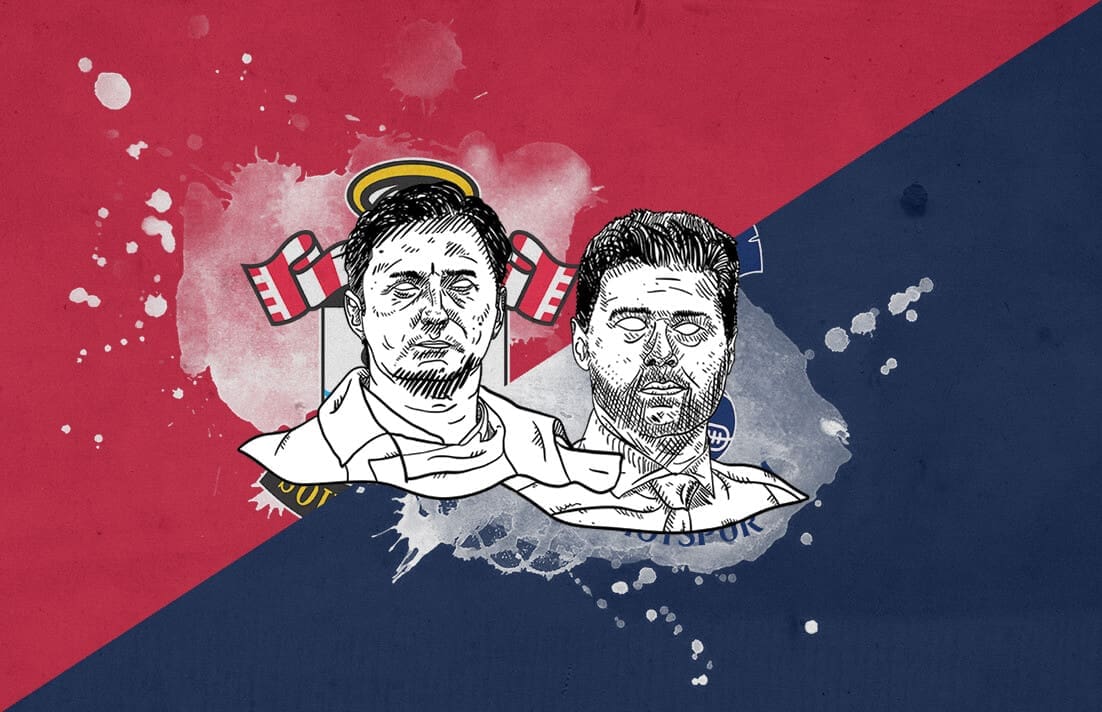




Comments